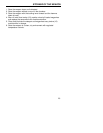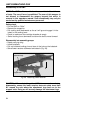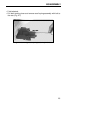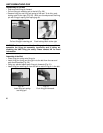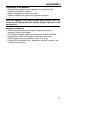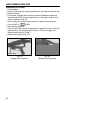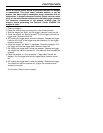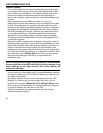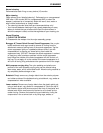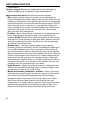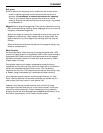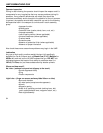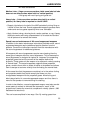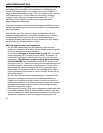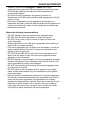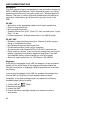
31
CLEANING
Normal cleaning
Performed after each firing or every twelve (12) months.
Major cleaning
Often referred to as “detailed cleaning”. Performed on an unsuppressed
UMP after 1,000 rounds (500 for a suppressed UMP) or when the
weapon is exposed to or excessively laden with sand, dust, water or
other visible contaminants or foreign matter.
• The cleaning intervals listed here are recommendations only!
• Your intervals between cleaning will vary greatly depending on many
factors to include the type of ammunition used, the environment in
which the weapon is used, and the thoroughness of your cleaning, etc.
Normal Cleaning
1. CLEAR THE WEAPON!
2. Disassemble the weapon into the major assembly groups.
Bruegger & Thomet Quick Connect Sound Suppressor Use a nylon
bristle toothbrush and rag or swab to remove all fouling from the
attachment area and locking lever of the sound suppressor. Tap the
sound suppressor lightly on a padded surface or blow it out with
compressed air to remove any loose fouling from inside the
suppressor body. (DO NOT immerse the sound suppressor in solvent
or insert any rods, brushes or patches into the sound suppressor
body! Wipe the outside of the sound suppressor off with a clean, oil-
free rag. Do not apply oil to the outside of the sound suppressor or it
will burn off during firing and obscure the operators view of the target.
Multi-purpose carrying sling The nylon webbing and plastic com-
ponents of the multi-purpose carrying sling can be cleaned using
warm soap, water, and a soft bristled brush. Allow the sling material to
dry completely before storage or use.
Buttstock Simply remove any foreign debris from the exterior polymer
and rubber surface of the buttstock using a toothbrush, rag, swabs or
compressed air when available.
Lower receiver Remove any foreign debris from the plastic pistol grip
using a tooth-brush, rag, swabs or compressed air. Scrub the top of
the hammer, ejector and the area around the front of the ejector and
release lever with a small amount of solvent or oil to break up the
carbon fouling. Remove the loose fouling and debris by rinsing the
components in the a solvent tank or by using rags, swabs, or



